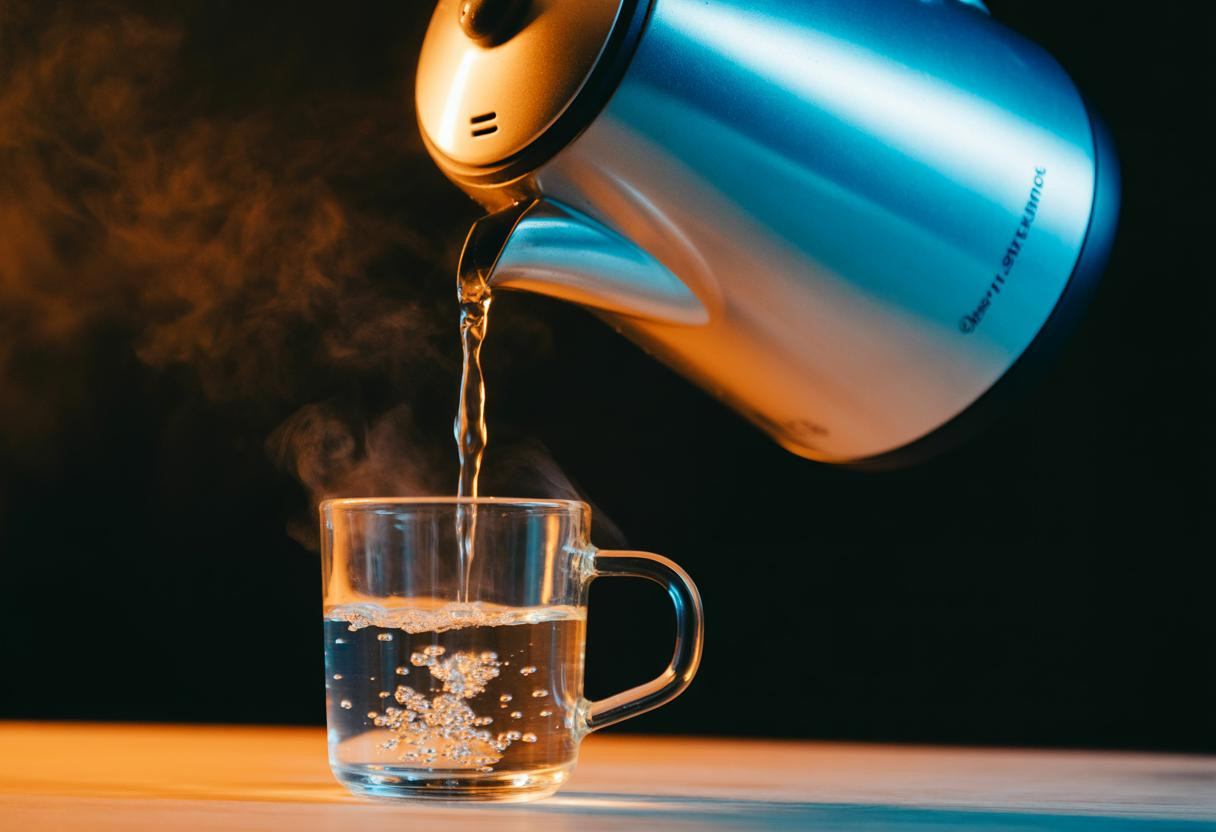Most people reach for their electric kettle multiple times daily without realizing they might be consuming microscopic amounts of nickel with every cup of tea or coffee. Recent scientific investigations reveal that certain kettle materials can leach up to 1,000 micrograms of nickel per liter into your drinking water—a discovery that’s transforming how health-conscious consumers approach their kitchen choices.
Just like everyday products that affect your health in unexpected ways, the humble kettle sitting on your counter could be introducing trace metals into your daily routine in ways most people never consider.
The hidden science behind metal leaching from kettles
Nickel leaching occurs through a process called passive ion release, where chromium-nickel alloys gradually shed microscopic metal particles into heated water. Unlike corrosion, this happens even with high-quality stainless steel through normal use.
WHO research documents reveal that new stainless steel kettles initially leach up to 6 micrograms per liter, but this rate decreases significantly over time as protective chromium oxide layers stabilize. The most concerning finding involves nickel-plated heating elements, which can release 100-400 micrograms per liter—sometimes exceeding 1,000 micrograms in extreme cases.
Temperature plays a crucial role in this process. Higher heating temperatures and repetitive boiling cycles accelerate nickel release, particularly during the first few weeks of kettle ownership when surface metals remain most active.
Material grades that make the difference for your health
Premium stainless steel grades offer superior protection
The numbers stamped on your kettle matter more than most realize. 304 and 316 stainless steel grades contain 8-11% nickel but paradoxically leach less than cheaper alternatives due to superior manufacturing processes and stable chromium ratios.
Grade 201 stainless steel, commonly found in budget kettles, proves problematic despite containing less nickel. These cheaper alloys rust more easily and release both nickel and manganese, creating multiple exposure pathways that health experts increasingly warn against.
The copper and aluminum alternatives reveal surprising trade-offs
Copper kettles offer excellent thermal conductivity but require protective coatings to prevent corrosion. When these coatings wear down, copper leaching becomes a greater concern than nickel exposure. Aluminum remains the most affordable option but lacks durability and doesn’t directly contribute to nickel leaching concerns.
Understanding your personal exposure and health implications
Adults consuming the European Food Safety Authority’s tolerable limit of 2.8 milligrams of nickel daily through various sources should monitor kettle contributions carefully. Someone drinking five liters of water from a kettle leaching 500 micrograms per liter would consume 2.5 milligrams—approaching their entire daily threshold from this single source.
Similar to hidden health risks in daily dietary habits, the cumulative effect of repeated low-level nickel exposure particularly affects people with existing nickel allergies, kidney impairment, or compromised immune systems.
The counterintuitive finding suggests that higher-quality stainless steel with more nickel content often leaches less due to superior manufacturing standards and more stable metal matrices—challenging the assumption that lower nickel content automatically means safer exposure.
Smart purchasing decisions that protect your family
Consumer behavior analysis reveals that health-conscious buyers increasingly prioritize 304/316 stainless steel kettles despite higher upfront costs ranging from $50-150. This investment approach mirrors financial habits that can transform your relationship with spending—focusing on long-term value over immediate savings.
Market trends show growing demand for ceramic-lined electric kettles and borosilicate glass models, which eliminate metal contact entirely. These alternatives cost 20-30% more but provide complete peace of mind for families concerned about metal leaching.
Practical steps to minimize nickel exposure immediately
Kettle selection and maintenance strategies
Choose kettles marked 304 or 316 stainless steel and avoid any models advertising 201 grade materials. Inspect heating elements for nickel plating, which appears as shiny silver coatings that wear over time.
Replace kettles showing rust spots immediately, as corrosion accelerates metal leaching exponentially. Clean kettles regularly with gentle descaling solutions rather than abrasive materials that damage protective oxide layers.
Usage techniques that reduce metal contact
Transfer boiled water to glass or ceramic containers for brewing tea and coffee rather than steeping directly in metal kettles. This simple step eliminates extended contact time between hot beverages and metal surfaces.
Consider letting new kettles run through 3-4 empty boiling cycles before first use, discarding the water each time to remove initial surface metals and manufacturing residues.
The future of safer kettle technology and materials
Emerging innovations focus on developing manganese-based stainless steel alloys that maintain corrosion resistance while reducing nickel content. Ceramic and enamel coating technologies show promise for creating completely inert interior surfaces in electric kettles.
Regulatory pressure from stricter WHO guidelines may drive widespread adoption of low-leaching materials, though compliance costs could initially impact affordability for budget-conscious consumers seeking safer alternatives.
Why this knowledge transforms your daily routine
Understanding nickel leaching empowers you to make informed decisions about one of your most frequently used appliances. Small changes in kettle selection and usage habits can significantly reduce your family’s daily metal exposure while maintaining the convenience of quick hot water preparation.
The key insight remains that material quality trumps price considerations when protecting long-term health—making kettle selection a worthwhile investment in your family’s daily wellness routine.
